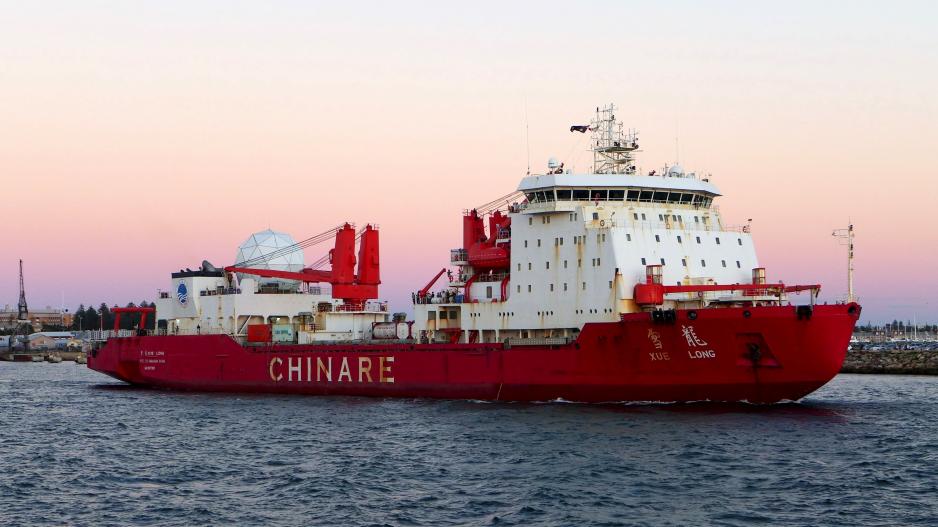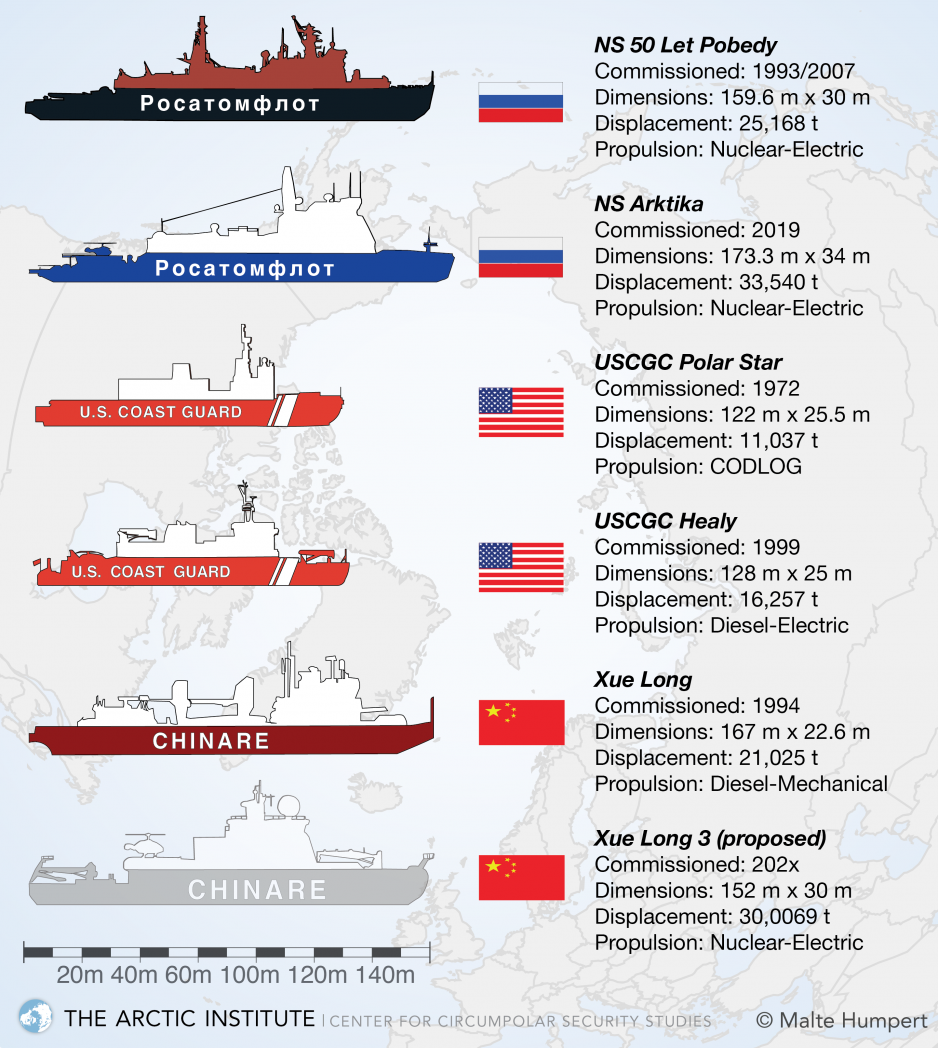China to Use First Atomic Icebreaker as Test for Future Nuclear Aircraft Carriers

Chinese icebreaker, Xue Long departing port in 2016 (Source: Bahnfrend on wikipedia (CC BY-SA 4.0))
The country’s first atomic icebreaker will rival Russia’s largest nuclear icebreakers in size. China will become only the second country to operate such a vessel and it will pave the way for the country’s first nuclear aircraft carriers.
This is the third most-read article in 2019:
A nuclear icebreaker will further enhance China’s ability to navigate the Arctic Ocean even during winter. With a displacement of more than 30,000 tons the proposed vessel will be just slightly smaller than Russia’s newest and largest icebreakers of the Arktika class.
China’s plans to build a nuclear icebreaker are just the latest step in its efforts to pursue a more active role in the Arctic. The country released its first-ever Arctic policy in early 2018 followed by the launch of its second conventional icebreaker in September. About two dozen Chinese vessels transited Russia’s Northern Sea Route in the last five years, more than any other country except Russia. It is also a large investor in Novatek’s Yamal LNG, a major natural gas project.
“This will now give the Chinese the ability to go anywhere at any time. The size of the icebreaker, if indeed reports are accurate, means China will have a capability that will rival Russia’s icebreakers,” explains Rob Huebert, associate professor at the University of Calgary and a senior research fellow with the Centre for Military and Strategic Studies.
Icebreaker paves way for aircraft carrier
But there is another, more long-term and strategic aspect to building this icebreaker. China will be able to draw valuable lessons from designing, constructing, and operating a nuclear icebreaker. “The use of a nuclear icebreaker can be understood as laying the foundation for the future acquisition of nuclear-powered aircraft carriers,” states Aki Tonami, Arctic researcher and Professor at the University of Tsukuba in Japan.
In original project documents the vessel is described as an “experimental ship platform,” hinting at its role as a test vehicle for nuclear propulsion. Currently, China operates two conventional aircraft carriers but in its great-power competition with the United States nuclear-powered carriers will be indispensable.
A powerful nuclear icebreaker
Earlier this week China General Nuclear Power Group (CGN) invited bids to construct the new vessel. China National Nuclear Corporation (CNNC) also published a tender notice for the project in June 2018 related to the small reactor technology, which will be used to power the vessel.
“China has rapidly increased its ability to build ice-class vessels thanks to advances in steel manufacturing. Building a nuclear icebreaker, for which bids were restricted only to companies from mainland China, would be a way to put that expertise to work while further refining it,” explains Mia Bennett assistant professor of geography at the University of Hong Kong and editor of Cryopolitics.
The proposed icebreaker will be powered by two 25 MW pressurized water reactors. The vessel will be capable of traveling into the Arctic during winter and open up polar waterways. Its top speed is designated at 11.5 knots, about 22 km/h. The specific purpose and operational role of the vessel remain unknown but it is described as a “comprehensive support ship.”
The vessel will be 152 meters long by 30 meters wide, with a maximum draft of 18 meters and displace 30,069 tons. These specifications place it among the largest icebreakers ever constructed.
Russia currently operates two types of nuclear icebreakers, two Taymyr-class icebreakers and two old Arktika-class icebreakers. The new Chinese icebreaker will be larger than any of them. Only the newly-commissioned new Arktika-class will be larger with a displacement of 33,450 tons when it enters service between 2020-2023.

Size comparison of major icebreakers in Russia, the United States, and China. (Source: Author’s own work)
New access to the Arctic Ocean
A nuclear icebreaker will be essential to open up shipping lanes in the Arctic Ocean, part of China’s multi-trillion dollar Belt and Road Initiative. While focus frequently lies on Russia’s Northern Sea Route, China may also integrate the Transpolar Sea Route across the center of the Arctic Ocean or Canada’s Northwest Passage into its Polar Silk Road concept. To reinforce this point, in 2017 China became the only country to have sent a ship across all three routes.
“The country also wants to increase its capabilities. Developing a nuclear icebreaker would put it a cut above every other country on Earth except Russia,” confirms Bennett. “For China to further explore the possibility of transpolar shipping in particular, it's going to need a nuclear icebreaker.”
Icebreakers for the Chinese Navy
On a much quieter level the Chinese Navy (PLAN) also launched a number of icebreakers in previous years. “They have just finished construction of two Type 272 icebreakers, which are about 5,000 tons [of displacement] and whose purpose is not yet understood,” Huebert points out. “Very little has been written on the intended use of these vessels and how they will compliment the two better known Chinese icebreakers.”
In contrast, the United States’ Navy does not own a single ice-capable vessel and the United States Coast Guard operates a 43-year old heavy icebreaker and a more modern medium icebreaker, with hopes of commissioning a new one in the next decade.
Beyond China’s Arctic ambitions
While a nuclear icebreaker is a strong statement of the country’s Arctic goals, experts say it is important to remember China’s wider foreign policy ambitions. “The Arctic still represents a fairly small area of interest compared to, say, Southeast Asia or even Africa,” concludes Bennett of Cryopolitics.
Nonetheless, China’s first atomic icebreaker could pave the way for nuclear technological advances which will reverberate far beyond the Arctic region.

